
Even if you've been doing laundry for decades, there are a few pressing questions that never seem to have clear answers. After all, many of us have picked up laundry hacks, tips and tricks from loved ones over the years—and everyone seems to have a different opinion. Is it okay to wash clothes in cold water? Should jeans really be turned inside out? Do we have to separate dirty laundry by color? If only there were an expert to set the record straight!
Okay, take a deep breath and set down the detergent. Armed with the right knowledge, you can preserve your garments, cut back on time spent in the laundry room and even help save the environment. Enter: Our laundry guide, which will answer all your burning questions about washing and drying clothes. We consulted with cleaning expert Laura Mountford (@lauracleanaholic), a leading "cleanfluencer" and author of laundry how-to book Live, Laugh, Laundry, to get the scoop on all things clothes-cleaning.
Video of the Day
Video of the Day
Ready to iron out your confusion? Let's dive into a load of laundry FAQs:
Q: What's the right water temperature for washing laundry?
Hotter is not always better! While it might seem as if washing your laundry on a hotter setting will make items cleaner, that's actually not the case, regardless of fabric or color. "Most laundry detergents these days are powerful enough to wash at 68°F," says Laura. "And a lot of the time, when you wash your clothes, they're actually not that dirty. So, unless clothing has caked-in mud or is badly stained, a cool wash really is sufficient."
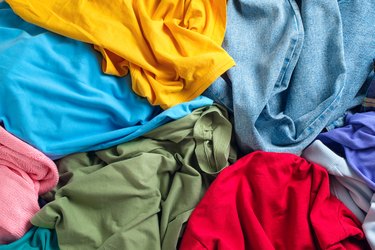
Washing laundry on a cool setting also helps save energy spent on unnecessarily heating up water, making it a more sustainable choice that winds up saving money on utilities. An added bonus? Washing clothes on a cool setting can prolong their lifespan, especially pieces made with synthetic fibers such as polyester and spandex. (Hello, workout gear!)
Q: How important is laundry color separation?
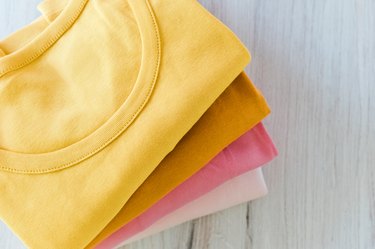
It's definitely worthwhile to separate clothes into lights, darks and whites to preserve their appearance. In fact, Laura recommends taking things a step further and grouping clothes into warm colors and cool colors so any excess dye that bleeds during the wash cycle won't dull other clothes. Here's a handy guide to warm and cool colors:
Warm colors: Shades of red, orange and yellow.
Cool colors: Shades of blue, green and purple.
Tip
For loads that include multicolored garments (e.g., light and dark stripes, floral designs, etc.), laundry expert Laura Mountford recommends using a color catcher like this one from the Dr. Beckerman brand. It’s a white, flannel-like scrap of fabric that catches any remaining dye that might bleed in the wash, minimizing dullness in white clothes and preventing clothes with multiple colors from losing vibrancy.
Q: How much laundry detergent do I really need?
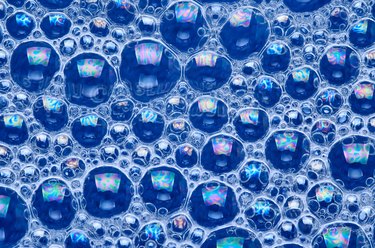
If you're a fan of the clean scent left on clothing by many laundry detergents, you might be tempted to add more than the recommended amount. More detergent should mean enhanced aromas, right? Not exactly. "Sometimes, with fabric softeners and conditioners, the reverse is actually true," Laura says. "Excess softener or conditioner can actually clog up fibers on your clothes, which attracts bacteria and dust and makes them smell worse."
So how much detergent should you really use? Well, it varies based on laundry load size. A good rule of thumb is to simply follow the recommendations on the detergent packaging.
Q: Are dryer sheets really necessary?
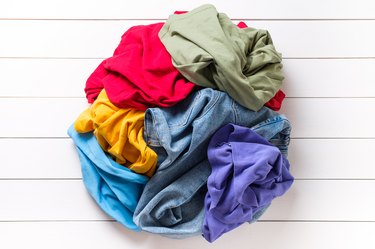
Yes! Dryer sheets enhance the work of detergent and fabric softener by magnifying fresh scents, reducing creasing and static, collecting lint and ensuring clothes are crisp. Laura recommends using dryer sheets instead of tumble dryer balls for best results.
What to do with leftover dryer sheets...
Do you have leftover dryer sheets? Don't throw 'em away! There are tons of other household uses for old dryer sheets. “They’re so good at reducing static and also for dusting," says Laura Mountford. "Plus, the lovely scent is great to put inside cushions and pillows to keep them fresh."
Q: When clothes say "delicate," what does that mean?
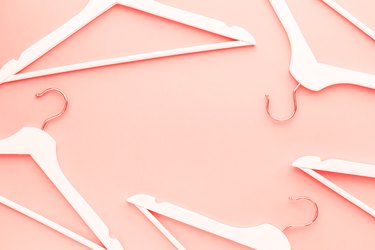
"Delicate" simply means that the clothing piece in question requires additional TLC. For example, clothing made of silk or wool is typically considered delicate. In these instances, take extra care to wash items using low temperatures and slow spin cycles. "The faster the spin cycle, the more the fibers will rub against each other," Laura says. "For a delicate item, that's going to damage fibers and cause them to rip or tear."
Q: What's the best way to brighten whites?
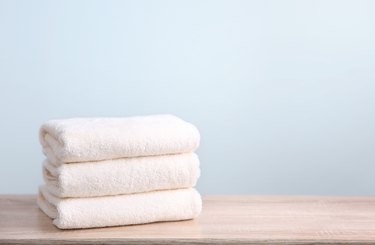
Your first thought is bleach, right? Not so fast, Laura says. Bleach is an extremely harsh chemical, which can easily damage fabrics and cause them to wear out faster. Instead, Laura recommends using a powder like OxiClean—it's affordable, less harsh and gets the job done. A scoop of powder in the drum of your machine while washing whites will keep them nice and bright.
Q: How do I remove set-in stains?

If it's too late to tackle a stain with a stain removal spray or Tide pen, you're dealing with something that has set in. This means the stain has essentially been baked into the fabric—and Laura says your best bet is to soak the garment in a plastic bin or sink. This is another place where laundry powders like OxiClean come in handy. "Soak stained clothes with powder before returning them to the washing machine," Laura advises.
Tip
Mesh laundry bags, such as these, provide protection for delicate items in the washing machine. “I use mesh bags to wrangle socks, makeup removal washcloths and other things that always seem to go missing,” says laundry expert Laura Mountford.
Q: How do I remove pet hair from clothing?

We love our pets, but the hair they leave behind? Not so much. Pet hair can be particularly stubborn to remove from fabrics (especially pet beds, collars and harnesses), even after a full wash and dry cycle. Luckily, Laura has a recommendation: pet hair dissolvers like Vamoosh. The product comes in packets that not only can be poured into the washing machine dispenser drawer alongside standard detergent but promises to leave your washing machine free of pet hair without chemical residue—so you can keep your pet's items as fresh and clean as your own.
Q: How do I remove bad odors from clothes or other laundry items?
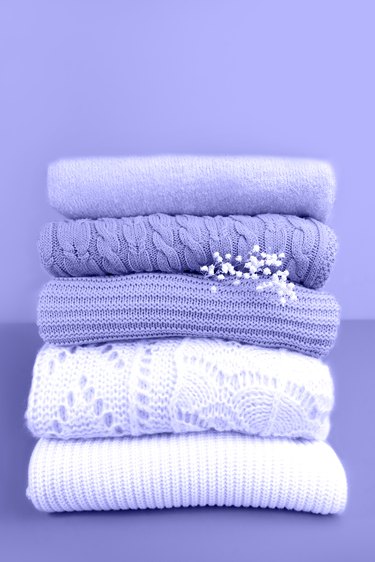
Every once in a while, laundry needs a bit of extra help to make sure it smells fresh. In these cases, Laura recommends scent-boosting beads to reinstate delightful aromas. Plus, there's something for everyone, from beads that smell like lavender to those scented like fresh cotton. "There's a lot of variety, and the scents are long-lasting," says Laura.
How to Treat a Smelly Washing Machine
If you’re doing everything right and your clothes still smell mildewy after going through the wash, the culprit could be a dirty washer. Here are expert Laura Mountford’s three simple pointers for avoiding a smelly washing machine:
- Remove and clean out the filter for your washer regularly.
- Make sure the rubber seal around the door of your washing machine is cleaned and wiped out regularly, as it can collect moisture that leads to mildew. Be sure to avoid products containing bleach, as they will break down the rubber seal.
- Leave the door to your washer open to allow air to circulate through it, preventing mildew and other bad smells.
Q: When should I air-dry clothing?

First and foremost, carefully read tags on laundry items. While it's easier to dry your clothes in the dryer, some might specify "lay flat" or "air-dry." Aside from that, Laura recommends using the dryer instead of air-drying to eliminate creasing and to fluff things up—especially towels, pillows and cushions.
Tip
Not sure what the laundry symbols on the tags of your washable items mean? Consider hanging an easy-to-reference laundry guide, such as this one, somewhere in your laundry room.
Q: What can I substitute in place of harsh laundry products?

If you're keen on eco-friendly laundry products, consider swapping out fabric conditioner for white vinegar with a few drops of lavender essential oil. Simply pour the mixture where you would pour fabric conditioner and run your washing machine as usual. If that weren't enough, white vinegar has an added benefit. "Vinegar is actually really good for keeping colors and whites nice and bright," Laura explains.
With our expert-informed roundup of easy-to-implement laundry tips, you can keep your clothes fresh, your laundry loads moving and your utility bills low. Just don't be surprised if people start asking why your clothes smell so amazing!